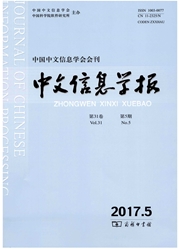

 中文摘要:
中文摘要:
研究藏语非声调方言的音调对于了解其声调起源具有重要的价值,可以使我们更深入地了解产生声调的基础和机制,尤其是导致声调语言产生声调的语音机制。通过对天祝藏语单音节和双音节音高的物理属性(也就是基频)的量化分析后,发现在该语言系统中具有一个相对较稳定的音高模式。单音节的音高模式和它的声母和韵母相关;双音节都是通过基频来凸显后一音节的。最后,通过和拉萨话、玉树话以及德格话的声调(音调)做对比分析后初步探讨这些方言中声调产生的一些问题。
 英文摘要:
英文摘要:
Tone is a later development for many of the Tibetan dialects. To study the pitch pattern of non-tonaldialects of Tibetan can provide us with a better insight into the property of tone in those tonal dialects of Tibetan,even to other languages. A regular pitch pattern has been found by acoustically analyzing of the monosyllabicand dissyllabic words. For monosyllabic words, the pitch contour is correlated to the initials and codas of the syl-lable. For dissyllabic words, the second syllable is stresses with the contribution of fundamental frequencies. Fi-nally, the general discussion is conducted by comparing the pitch pattern of Tianzhu with the tone pattern of Lha-sa and Kham(s De.dge and Yul.shul).
 同期刊论文项目
同期刊论文项目
 同项目期刊论文
同项目期刊论文
 期刊信息
期刊信息
